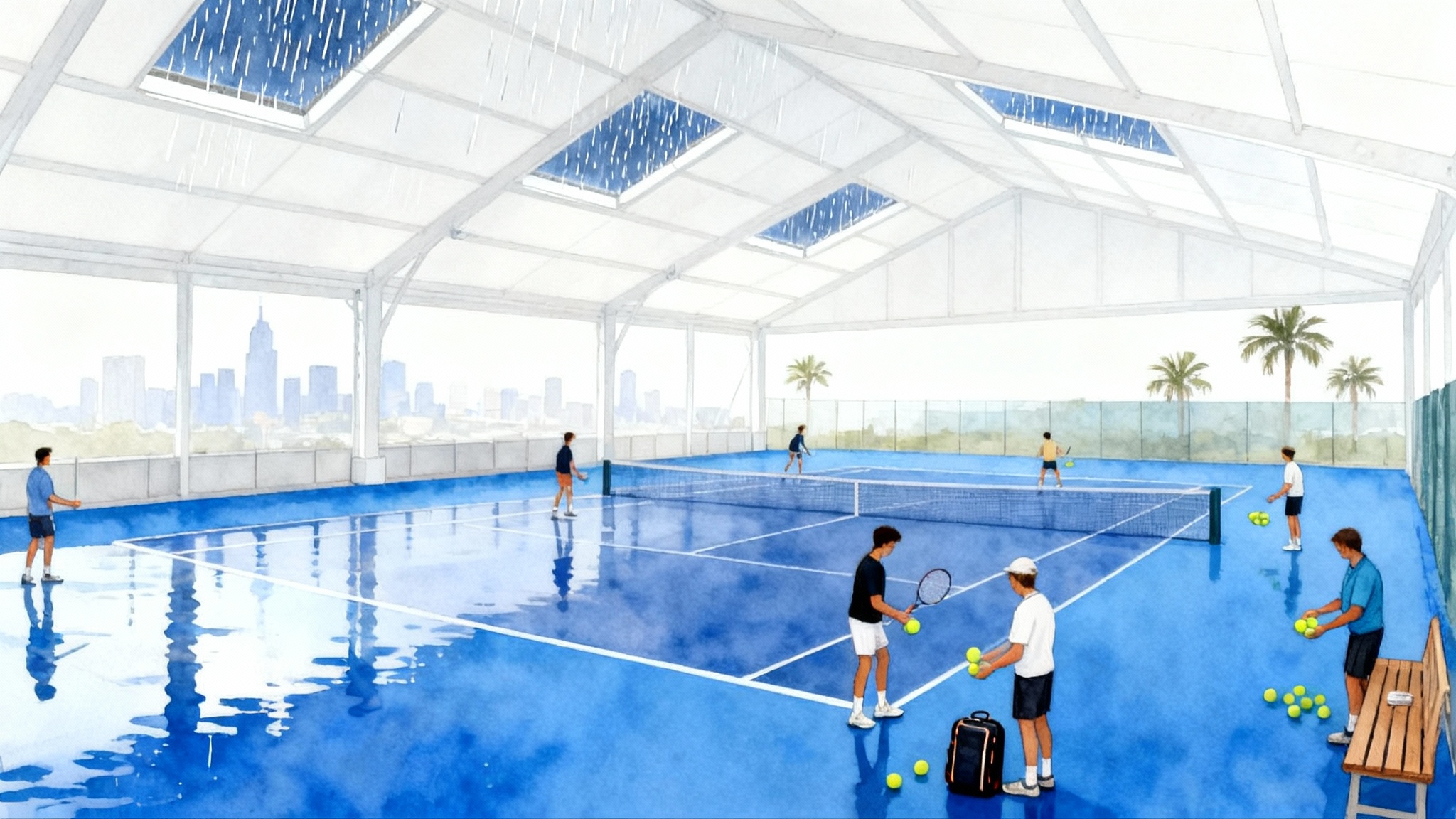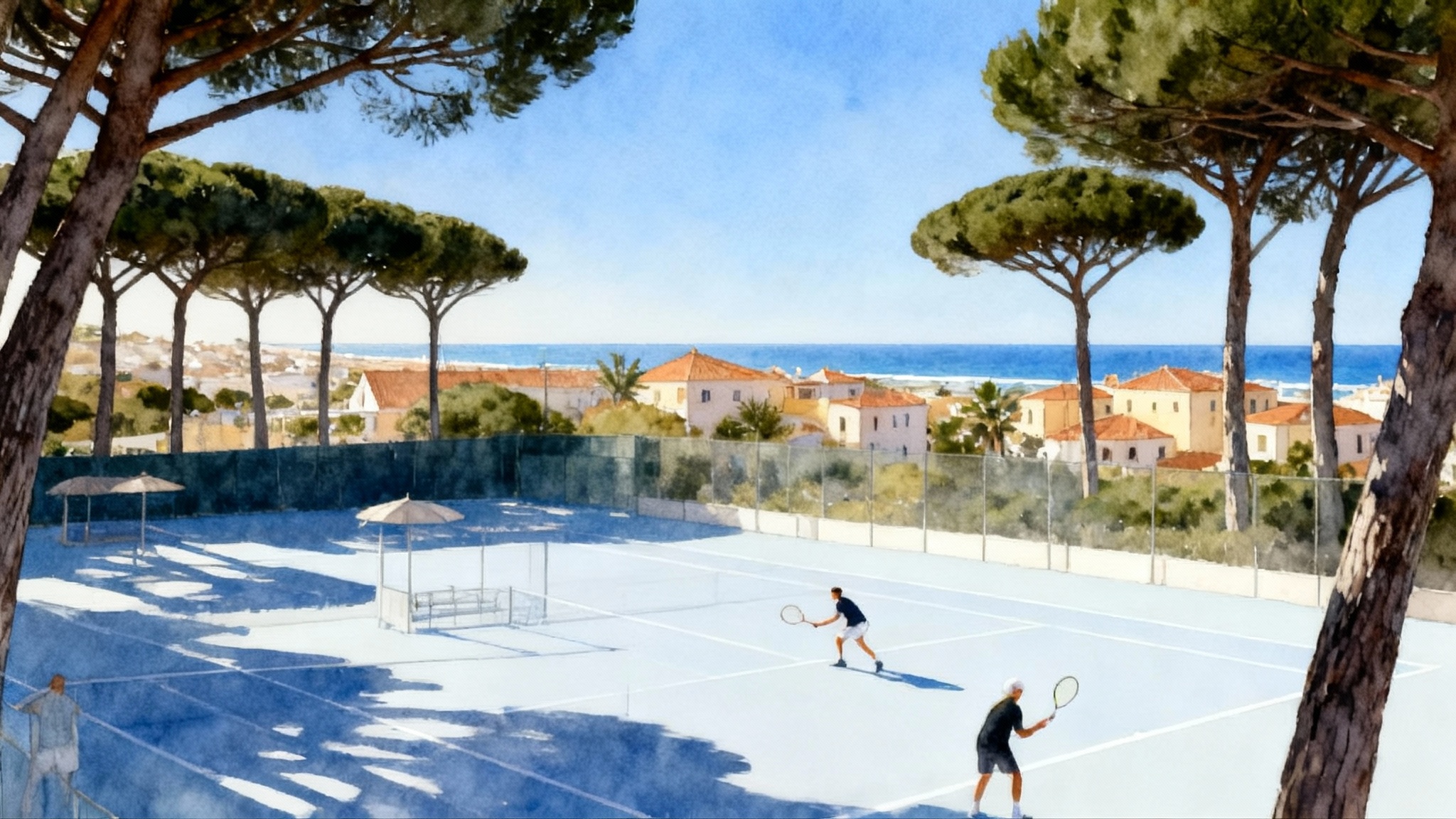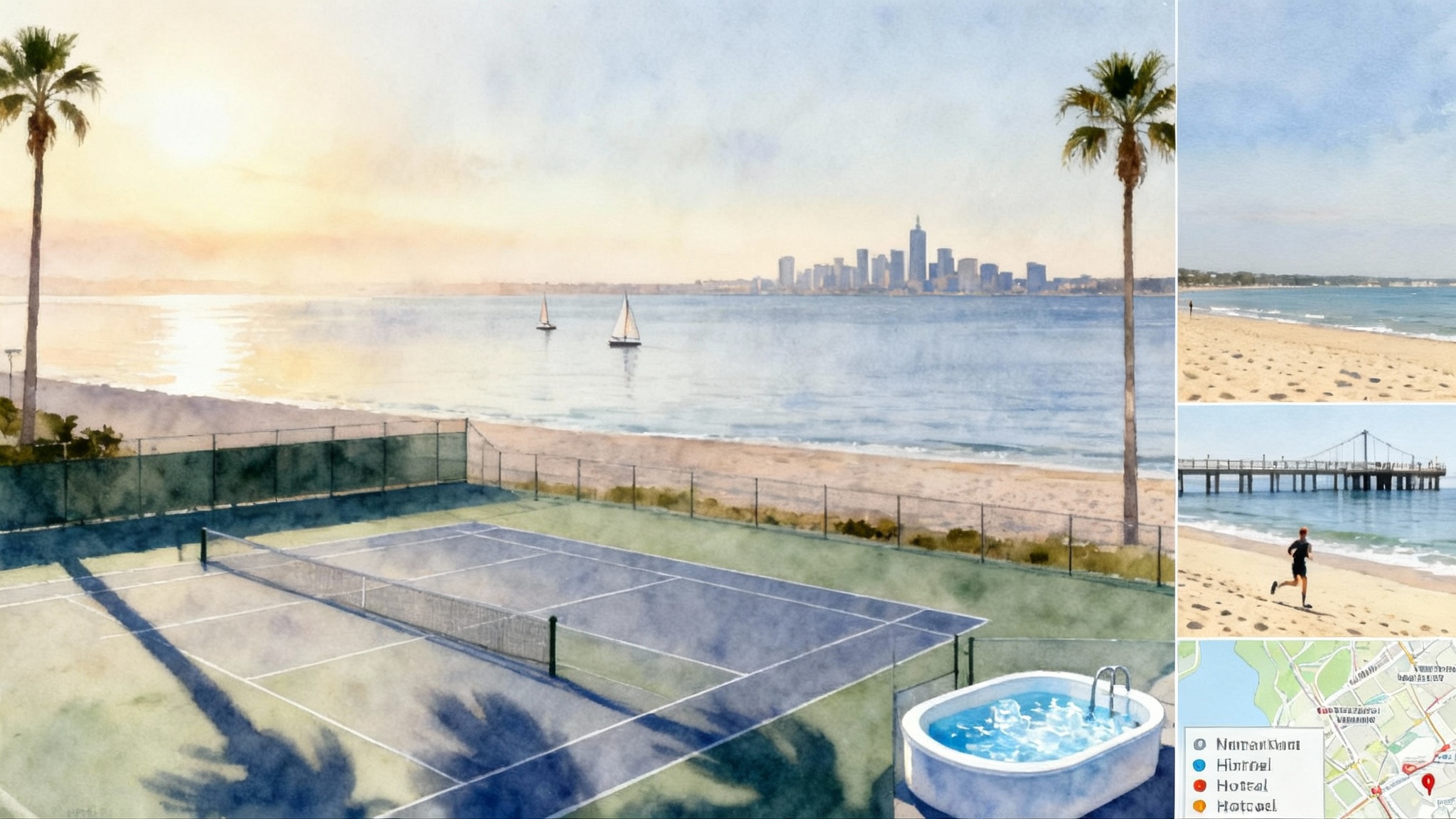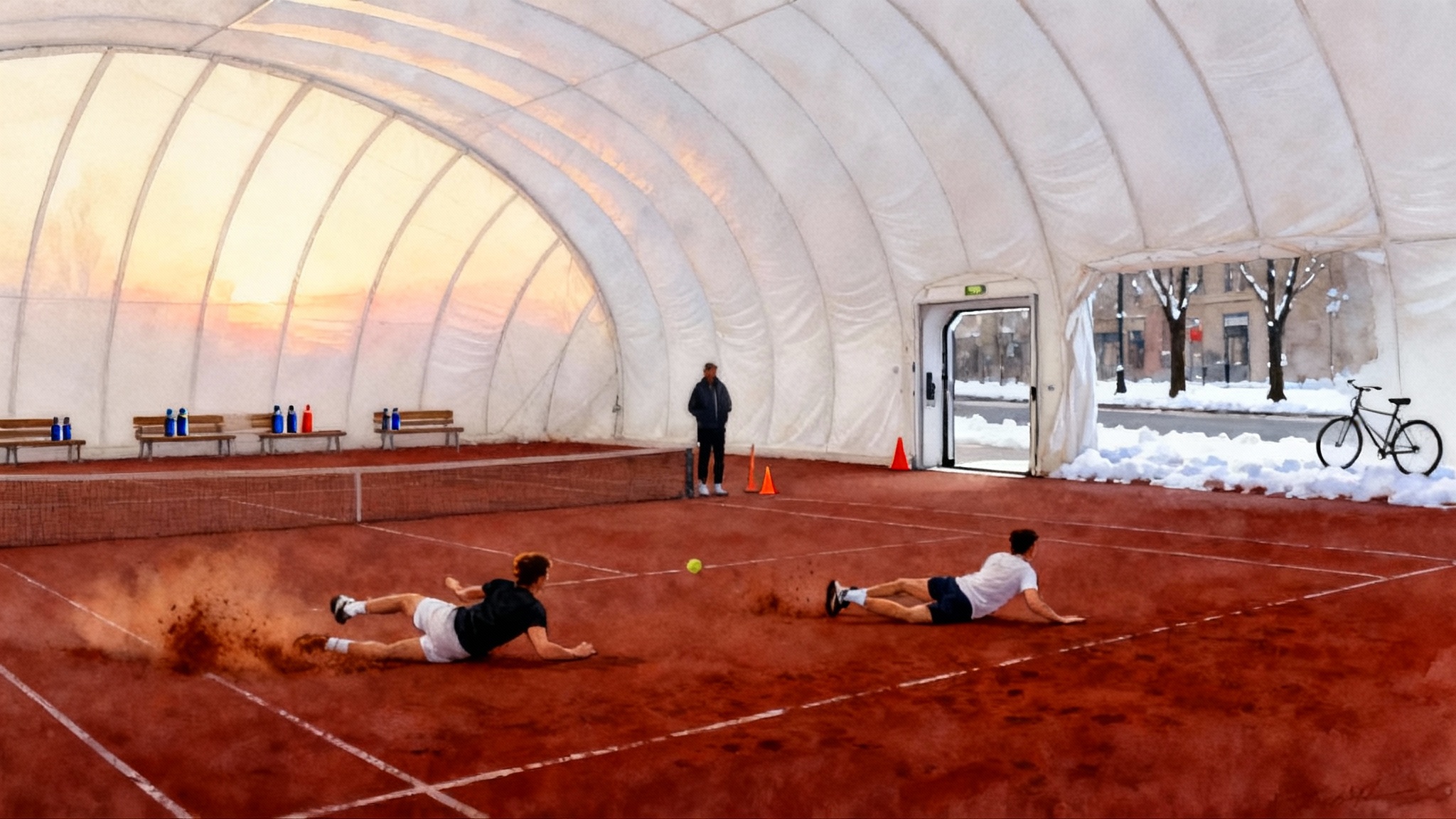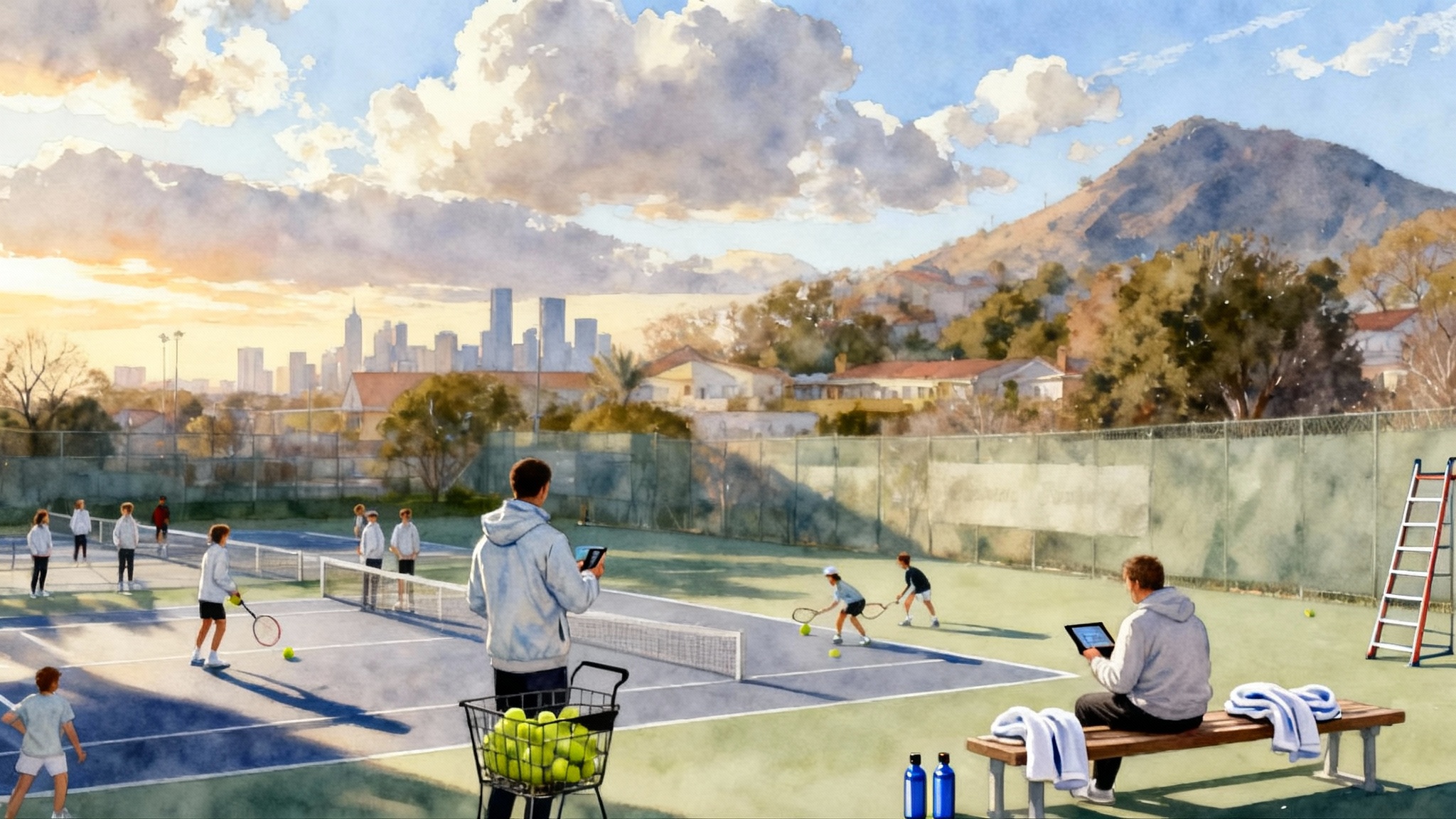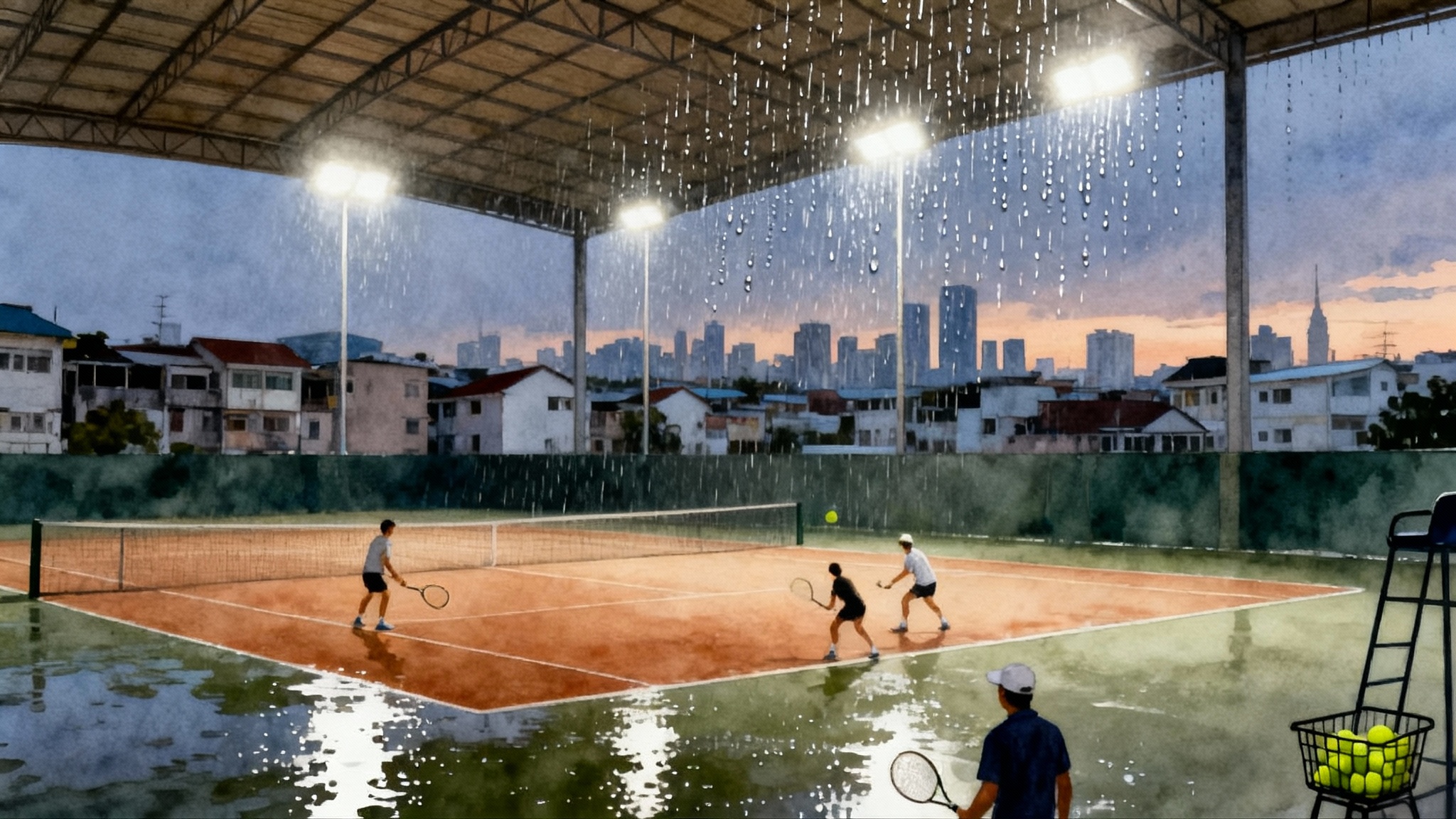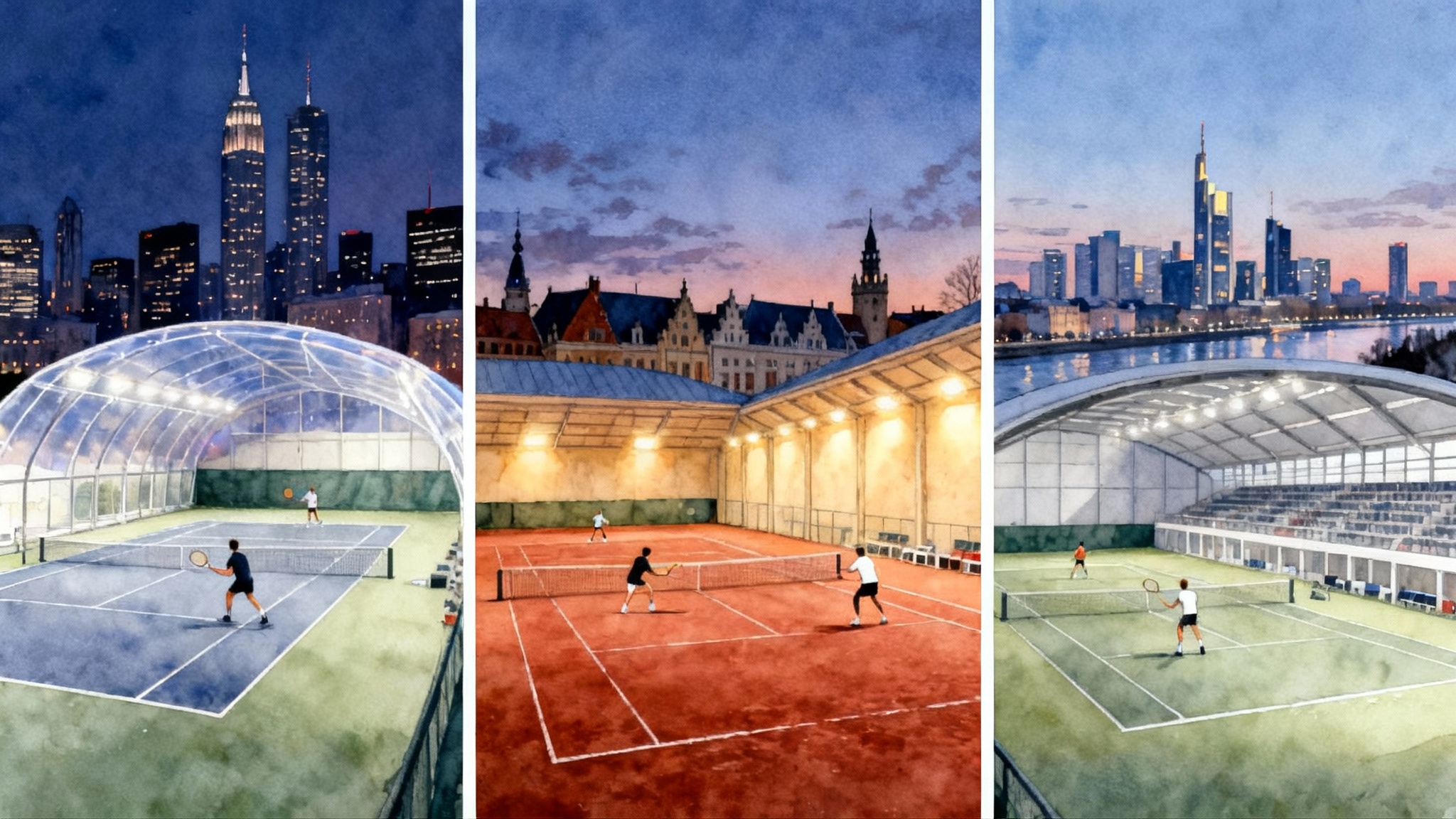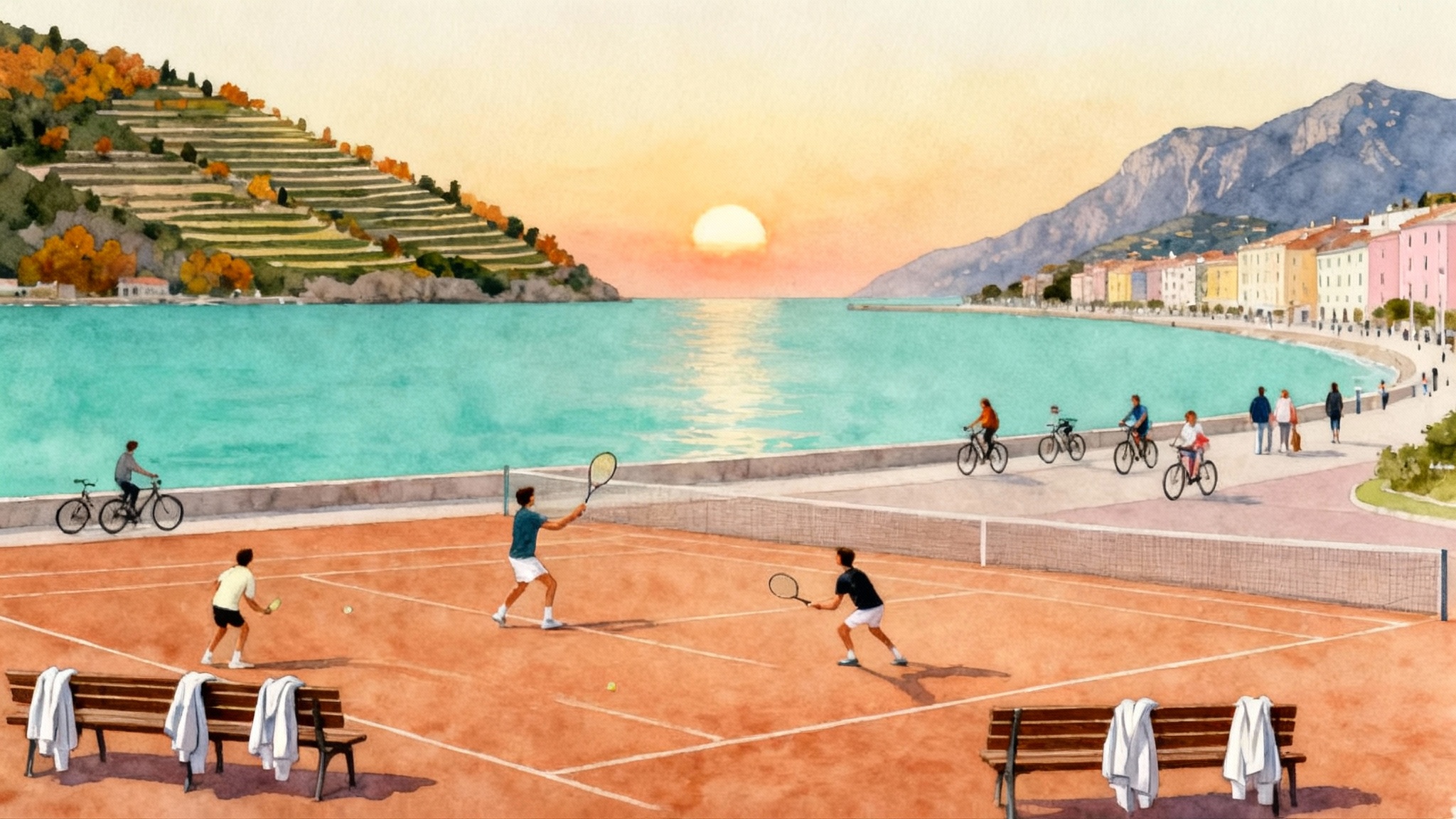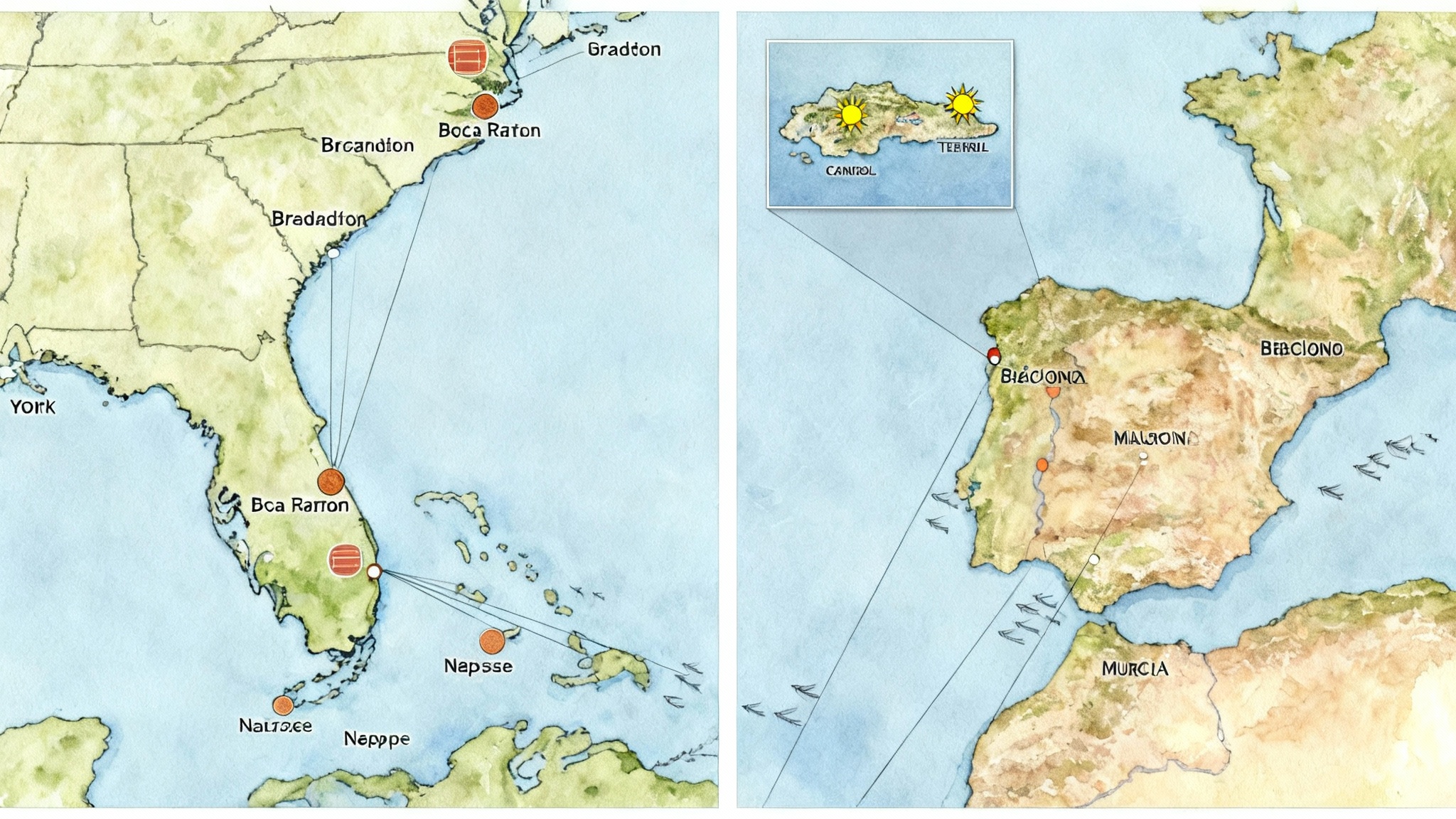Train in Cancún: 2025–26 Rafa Nadal Tennis Center Guide
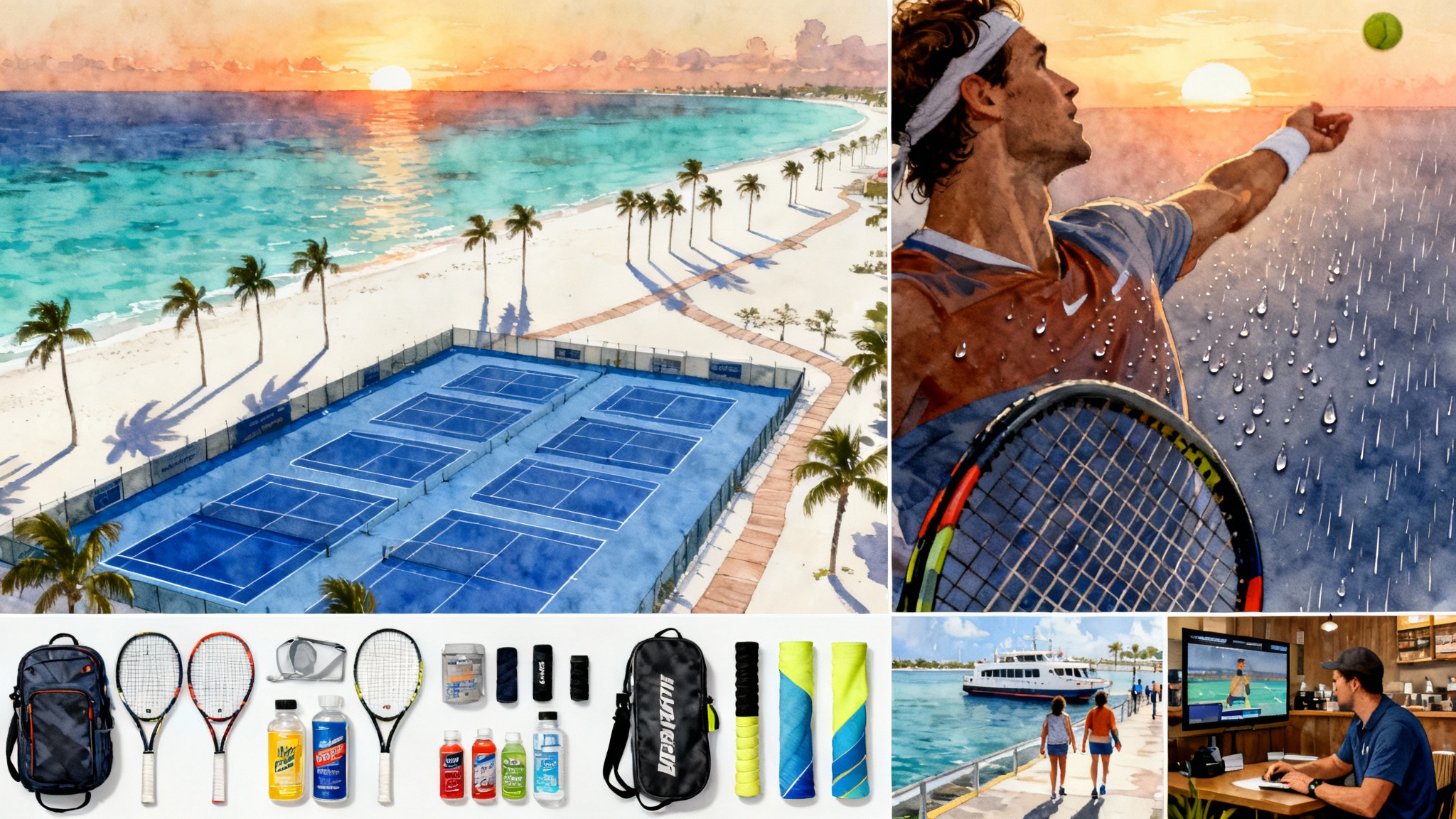
Why the Mexican Caribbean is the smart winter base for United States players
If you want serious training that still feels like a holiday, the Mexican Caribbean solves a problem that most tennis families face. The season between December and April brings long strings of dry, sunny days, warm but manageable temperatures, and little jet lag for travelers coming from the continental United States. Add dozens of direct flights into Cancun International Airport and you get a stress-light travel day followed by a full-court training block.
Here is the bigger shift. You can train under the Rafa Nadal Academy methodology without crossing the Atlantic. The Rafa Nadal Tennis Center in Costa Mujeres is set inside a beachfront resort area just north of central Cancun, so you walk from your room to the courts and back to the pool without a shuttle or a rental car. That resort integration is the key advantage over most Florida setups that require daily drives across town and over a Spain trip that adds long flights, a bigger time change, and winter rain risk in some Mediterranean cities. For our in-depth notes, see the academy profile for Costa Mujeres. For official program details and facilities, including adult and junior options, eight hard courts, a padel court, a sport cafe, and the Rafa Nadal Museum, visit the Rafa Nadal Tennis Center Costa Mujeres.
Where you will train: Costa Mujeres in four bullet points
- Eight hard courts plus a padel court. The hard courts match the pace you will see in most United States high school, college, and USTA events, so transitions back home feel natural.
- The setting is inside the Grand Palladium Costa Mujeres complex with optional access to the adults-only TRS Coral Hotel. You can book tennis-inclusive packages or request a-la-carte training and stay elsewhere nearby.
- On-site amenities matter on a training trip. You have a sport cafe for recovery meals and hydration, the Rafa Nadal Museum for an inspiring off-court hour, and a shop for grips and strings.
- Coaching follows the Rafa Nadal Academy methodology that blends high-intensity court work with tactical progressions and footwork patterns. Sessions typically emphasize heavy ball, direction changes, and point construction rather than isolated stroke tinkering.
Think of the center as a campus. Courts anchor one end; food, pool, and beach time live on the other. When you walk the path between them you switch modes, which is often the secret to keeping a full week of training from feeling like a grind.
A sample seven-day training week for winter or spring 2025–26
This template is built for a motivated adult or a junior traveling with family. Adjust volumes if you are just getting back from an injury or if your home climate is very cold before you depart.
-
Day 1, Saturday travel and settle
- Morning or midday flight into Cancun International Airport.
- Afternoon: light beach jog in shoes on packed sand, mobility, 30 minutes of shadow swings, and a short hit if daylight allows.
- Evening: early dinner, no alcohol, two liters of water, lights out by 9:30 p.m. local time.
-
Day 2, Sunday activation and assessment
- 7:00–8:00: dynamic warm-up, band work, and a brief court orientation.
- 8:00–10:00: assessment hit with a coach. Goals: rally tolerance baseline to baseline, second-serve confidence, neutral ball depth.
- 16:30–17:30: optional padel for fun movement and reaction time. Keep heart rate moderate.
-
Day 3, Monday foundation and serve day
- 7:30–9:30: technical block on first step acceleration, loading on the outside leg, and forehand contact point. Finish with six first-to-seven tiebreakers.
- 16:00–17:00: serves plus first ball patterns. Film 10 minutes from behind the court for later analysis.
- Recovery: 12 minutes contrast shower, 20 minutes pool float, 5 minutes diaphragmatic breathing.
-
Day 4, Tuesday patterns and defense
- 7:30–9:30: cross court to down the line pattern work, defending with height and spin, then turning defense into offense with the next ball.
- 15:30–17:00: doubles drills if traveling with a partner. Focus on move-and-cover at the net and return plus volley.
- Evening: family dinner off property or at a quieter restaurant to reduce noise and stimulus.
-
Day 5, Wednesday controlled match play
- 7:30–9:30: coach-arranged match play with a player of similar level. Two sets, match tiebreak if needed. Record serve percentage and return depth with rough counts.
- 17:00–18:00: mobility and glute activation instead of more hitting. Early bedtime.
-
Day 6, Thursday weapons day
- 7:30–9:30: two-forehand drills, inside-in and inside-out, and backhand redirect down the line under pressure. Add return-plus-three patterns.
- 16:00–17:00: targeted serves to the body and slider wide patterns. Close with five minutes of second-serve kick under fatigue.
-
Day 7, Friday taper
- 7:30–9:00: light point play, approach-and-finish reps, and transition volleys. End with 12 minutes of serves visualizing weekend competition.
- Afternoon: family excursion or museum visit. Pack early and photograph racquet string labels for reference.
-
Day 8, Saturday fly home
- Short mobility and 20 minutes of calm beach walking. Hydrate in the morning and carry electrolyte packets for the plane.
Notes for juniors: Shift extra court hours to morning blocks and keep afternoon work to mobility and video study. A second hit late morning is better than stacking heavy work into the hottest hour.
Budget and lodging strategies that stretch value
Pricing swings by week in winter, yet the right choices can keep a first-class tennis base within reach.
-
Choose your resort fit
- Grand Palladium Costa Mujeres offers family-friendly rooms near kids clubs and pools. You can still train hard and have the rest of the crew happily occupied.
- TRS Coral Hotel is adults-only with quieter pools and a calmer dining scene. It suits adult training camps or parent getaways while a junior trains in the morning.
-
Book the right week
- The two most expensive windows are the Christmas and New Year holidays and the core of spring break in March. January and the first two weeks of February often deliver ideal weather without the loud crowds.
-
Use package math
- Tennis-inclusive packages at the center sometimes combine lodging with daily clinics or private lessons. Compare the bundle to pricing a-la-carte. The bundle often wins once you add balls, water, and post-session smoothies.
-
Airfare tactics
- Fly Saturday to Saturday early morning to catch lower fares and lighter immigration lines. Consider hubs with frequent Cancun flights such as Atlanta, Miami, Houston, Dallas, Chicago, New York, and Los Angeles.
-
Transfers and time
- Prebook a shared shuttle or private transfer to Costa Mujeres. The ride is usually about 35 to 45 minutes depending on traffic.
-
Hidden costs to budget
- Stringing: bring one prestrung backup per day if you hit heavy spin. If you plan to restring on site, pad the budget for higher resort rates and 24-hour turnaround.
- Grips: in humidity, plan on one new overgrip per session. Buy a 12-pack at home and pack it flat in a zip bag.
- Laundry: quick-dry shirts and shorts can be sink-washed. Pack a small bottle of detergent.
Heat and humidity game plan that actually works
The Caribbean sun rewards those who plan. Three simple systems make a big difference.
-
Hydration protocol
- Start two days before departure with a liter of water before noon and a liter in the afternoon. On court, rotate plain water with an electrolyte solution every 10 minutes. Avoid the trap of drinking only after points; sip during ball pickup.
-
Equipment adjustments
- String two to three pounds tighter than your cold-climate winter setup. Humid air slows the ball slightly, and the firmer bed keeps trajectories honest.
- Use tacky overgrips and replace them often. A fresh grip can save a backhand at 30–40 late in the set.
- Wear light colors, a breathable hat, and a thin sun sleeve. Apply broad-spectrum sunscreen 20 minutes before you step onto the court, not as you walk out.
-
Scheduling
- Book primary work 7:30 to 9:30 in the morning and put pattern or serve work after 16:00. Midday is for recovery, shade, and family time.
Rain and wind: real backup options
Dry season rain usually shows up as a brief shower. When courts pause, you still have productive choices.
-
Go indoor for gains
- Use the gym for contrast tempo lifts and footwork ladders or do a 25-minute mobility circuit in shade. Ten minutes of video analysis from the morning session often unlocks your next drill.
-
Stay on campus
- Visit the Rafa Nadal Museum inside the center for an inspiring hour and a low-stress cooldown. Grab a light meal at the sport cafe and rehydrate before courts reopen.
-
Adjust expectations by month
- December through April is the most reliable weather window in Cancun with lower rainfall than summer and early fall. A concise month-by-month overview is here: best time to visit Cancun.
Wind note: Easterly trades can pick up in the afternoon. Use cross court neutral balls with extra margin, then attack down the line with a heavier, flatter contact when you play into the wind.
Nearby match play without wasting half a day
-
Coach-arranged sparring
- Ask the front desk to pair you with a hitter at your level for a two-hour session. State your Universal Tennis Rating system (UTR) number if you have one and list specific goals like second-serve pressure or approach patterns.
-
Adult and junior clinics
- Clinics are the easiest way to slot into point play fast. Treat each clinic as a scouting session to find partners for the next morning.
-
Weekend sets
- If you want more competition, ask about local round robins or Universal Tennis Rating system events within a short ride. You should not need to burn a day in the car. Keep sessions early to beat both heat and crowds.
Family add-ons that keep training on track
-
Isla Mujeres snorkel day
- The ferry from the mainland runs frequently, and water clarity is often excellent in winter. Schedule it after your Friday taper.
-
Underwater art without the swim team logistics
- The Underwater Museum of Art has glass-bottom boat options in addition to snorkel trips, which is helpful for mixed ages.
-
Cenote dip and archeology
- Choose a single site instead of overscheduling. One half-day cenote plus a late lunch beats a three-stop marathon that wrecks Saturday’s session.
-
Theme parks for one long afternoon
- Xcaret or Xel-Ha deliver a big payoff if you go with a plan. Pick two zones to prioritize, prebook, and leave by sunset to protect recovery.
-
Kid time on site
- Grand Palladium’s kids clubs and pools mean a parent can train in the morning without guilt. Rotate parent duty in the afternoon so each adult gets a quiet hour.
Getting there and getting it right
-
Documents and timing
- Carry valid passports with at least six months before expiration. Keep digital copies of confirmations and travel insurance.
-
Airport choreography
- On arrival, follow baggage claim and walk straight to the transportation area where your prebooked shuttle meets you. On departure, arrive at the airport three hours before an international flight during winter peak weeks.
-
Communication and money
- Use the hotel Wi‑Fi to message family rather than switching mobile plans for a short trip. Bring a credit card with no foreign transaction fees and a small amount of pesos for tips.
-
Health and safety
- Drink bottled or filtered water. Wear reef-safe sunscreen for beach days. Respect red flags on the beach for currents.
When to go: your 2025–26 monthly planner
-
December
- High holiday demand, postcard weather, all systems go. Book early and accept peak pricing if holiday time is the only option.
-
January
- Prime training weeks with calm beaches and cool mornings. This is the sweet spot for adult improvement blocks and junior base-building.
-
February
- The most consistent month for low rain and low sargassum. Courts are busy, so reserve private sessions soon after you book flights.
-
March
- Spring break crowds arrive. To protect your sessions, use sunrise starts and pick resorts with clear quiet zones. If you want a competition week, target early March or the last few days of the month.
-
April
- Shoulder season begins after Easter week. Prices ease and mornings remain excellent. This is the best value window for families that can travel outside school breaks.
What to pack so the courts feel like home
-
Two racquets strung within two to three pounds of each other.
-
Twelve overgrips and two wristbands per training day.
-
A hat with dark underbill, sun sleeves, and two pairs of polarized sunglasses.
-
Electrolyte packets, a soft-sided cooler bottle, and a collapsible funnel.
-
A small tripod or phone clamp for filming serves from behind the baseline.
-
Resistance bands, a lacrosse ball, and a thin yoga mat for mobility in the room.
-
Zip bags for wet gear and a travel-size detergent for sink washing.
-
Florida or Spain versus Cancun in one honest paragraph
Florida is easy to reach and familiar, but winter fronts can stack windy days and you often drive to off-site courts and hunt for public sessions. Spain delivers clay expertise and strong coaching, but winter travel hours, jet lag, and occasional rain insert friction into a focused seven-day plan. Cancun gives you warm, dry mornings, short flights from much of the United States, and a walkable resort setup wrapped around a serious coaching methodology. If you want a stateside option with similar hard-court reliability, see our Newport Beach year-round base guide. For Europe’s peak winter alternative, compare the Algarve winter tennis guide.
The takeaway
If your goal is a winter or spring block that upgrades your game without sacrificing family time, anchor in Costa Mujeres. Book morning court time, pack redundancy in strings and grips, and let the resort layout shoulder the logistics while you build real skills. The result is a week that blends measurable progress, happy travel companions, and the kind of beach recovery that makes you eager to hit again tomorrow.
